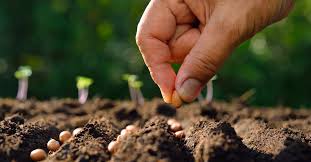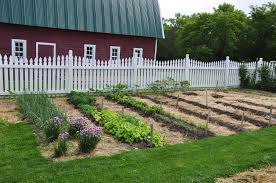By Becky Novak
I don’t know about you, but the last few days have me itching for consistently warmer days. The great thing about gardening is most of the hard labor is done during the cool spring days. I’ll be the first to admit that gardening chores are not as much fun as planting and growing fruits, herbs, vegetables, and flowers. I know that early spring can play games with you: one day it’s raining, then it’s freezing/snowing, etc. But whenever you have one of those awesome warm and sunny spring-like days, get out in your garden and start cleaning it up.
Here’s a brief overview of what you need to do to clean up your garden:
- Clean Up Leaves and Debris: There is a debate among gardeners about whether you should pull out dead plants in late fall or wait until spring. One side says if you leave dead plants, you risk diseases in your soils and bad pests hibernating there. The other side says that if you leave dead plants, you offer a habitat for beneficial insects, especially butterflies. I prefer leaving anything that died from the first frost in my garden in the winter. Anything that was weak or dying from something else, I pull out. That is my compromise.No matter your preference, early spring is the time to pull out any dead plants and either remove the leaves or break them up and mix them up in the soil.
- Pull Out Your Weeds: The first thing to grow every year is all those blasted weeds. Make sure you get them down to their roots, so they do not just come back up! I like to pull weeds right after a rain, so the soil is loose and easier to work with.
- Make sure to add compost or other additives to your soil: For example, tomato plant like lime and bone meal helps to grow larger root vegetables. Sometimes it is a little overwhelming to figure out what to add to the soil. If you struggle, you cannot go wrong with a nice layer of compost materials.
Now that we have that accomplished, there are a few things we can plant right now! I will be happily planting this weekend!
- Peas: Direct sow peas 4-6 weeks before your last spring frost date.
- Arugula: Direct sow arugula seeds as soon as the soil is thawed. They can withstand cold temperatures and light frosts with protection.
- Spinach: Direct sow spinach as soon as the soil is thawed. They can withstand cold temperatures and light frosts with protection.
- Leeks: Start leeks indoors 8-12 weeks before your last frost date. Transplant outdoors when temperatures are staying over 40 degrees Fahrenheit.
- Asparagus: In warm climates, plant asparagus crowns in winter or as early as possible in spring. In cooler climates, plant the crowns 4 weeks before your last frost date.
- Carrots: Direct sow your first carrots 3-4 weeks before your last frost date.
- Parsnips: Direct sow your parsnip seeds once the soil is thawed and averaging at a temperature around 52 degrees Fahrenheit. You can use cold frames or other tactics to get the soil warm enough for even early sowing.
- Celery: Start celery seeds indoors 8-10 weeks before your last frost date. Transplant to outdoors around your last frost date. A hard frost can kill the plants.
- Sweet Potatoes: Start your slips indoors about 6-8 weeks before your last frost date. Don’t plant outside until after your last frost date and when the soil is warm enough.
- Lettuce and other greens: direct sow 2-4 weeks before your last frost date.
- Peppers: start pepper seeds indoors 8-10 weeks before your last frost date.
- Tomatoes: start tomato seeds indoors 6-8 weeks before your last frost date.
- Rhubarb: plant rhubarb divisions as soon as the soil is thawed in early spring.
I hope this helps you get prepared for the summer gardening season ahead of us. Next week we will discuss how to make a raised bed in your yard for the beginner gardener.





